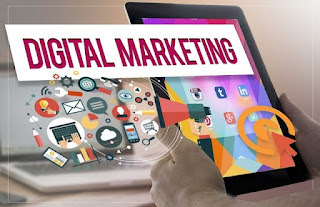1. Trial and Error Testing
Where one would be tempted to relegate this tip to tip number 7, under the guise of, “If you don’t succeed, try, try, again.” one would strongly suggest that you go into the entire marketing process with a mind to trial and error testing. It shouldn’t just be a floating philosophy; it should be the linchpin of your process and overall success.
Your focus shouldn’t be on success because a digital marketing strategy doesn’t experience success, any more than a beating heart achieves success. And, just like a beating heart, your job is to make it as strong and efficient as possible. Do not focus on success or a monthly target. Instead, focus on finding what works, and then building on it. That way, as the marketplace evolves, so does your strategy.
2. Targeting, Retargeting, and Market Research
As a seasoned marketer, you probably know everything there is to know about targeting and re-targeting, and it can be quite frustrating when you know your target better than they know themselves, and yet the rotters still won’t buy from you.
One could whine and moan about implementation problems, or conversion metrics, but your real problem is probably a misunderstanding about the state of your targets. This misunderstanding leads to problems when new marketers confuse successful metrics with their marketing campaigns.
For example, there is an ad for a car, showing the car with price and financing terms. The marketer runs the same picture ad across blogs, their website, social media, and emails. Yet, the same ad only receives actionable leads from emails. Every avenue targets the same people, but for some reason, it is only the emails that generate leads. How is this possible when the target audience who receives the ad is the same?
The problem is the state of the target. Somebody who opens an email for your ad is more likely looking for a car. Whereas when that same person is searching Facebook or a blog on car parts, they are not looking for a car. They are not in a ready state for car buying.
Do your targeting research, but also consider the state of your target when they see your ad and use these assumptions to temper your campaign.
3. Creating a Baseline
Some call it creating a baseline interest, others call it laying the groundwork and others call it priming the pump, but it all pretty much means the same thing. You put out a bunch of hooks and see which fishes have a nibble.
Ideally, your starting content should be disseminated across free or cheap platforms, and it shouldn’t have anything controversial or brand-breaking. This is not an area where shocking for dramatic effect is a good idea. Do not confuse your preliminary marketing with guerrilla marketing, especially since guerrilla marketing is often very expensive.
In this case, the goal of your digital marketing strategy is to promote your website, your product, or your brand. You aim to try out a few of your marketing methods, a few of your ads, and a few of your ideas to find out which generate interest and to see if any generate sales. Do not rush your campaign by throwing everything at the wall to see what sticks, but feel free to be as creative as you wish.
4. All Roads Lead to Contact or The Checkout
No matter which element of your marketing strategy you are working on, you must make doubly sure that your target audience has a clear and guided way to contact your company or buy from your company.
Possibly the worst offenders for this are people who advertise on YouTube and Instagram. On YouTube, there are double ads, and people who watch the first ad have no idea where to buy the product because the display ad on the YouTube page is always for the second ad.
As for Instagram, there are video snippets people can create that last a set amount of time and then disappear. They often feature a “Swipe up” request. However, many advertisers have people swipe up to a profile or to nothing, which leaves the viewer high and dry with no idea how to find the product, or where they can contact the company selling them.
For every piece of marketing content, ask yourself, how is my target audience going to get from the point of contact to your website or checkout.
5. Sell the Steak and Not the Sizzle
The only people who need to sell the sizzle are the people who have poor-quality steaks to sell. Going over your key selling points and weaving them into your advertising may seem like schoolwork, but it is a valid direction in which you may take your marketing. Keeping it simple doesn’t mean you have to compete on price or performance. Keeping it simple is often the best way to drive a digital marketing strategy over the long term.
There is an old Muppets scene where a bunch of frogs is trying to come up with a sales slogan. They offer their puffed-up slogans, sayings, and promotional fluff. Then, Kermit comes along and says, “Ocean Breeze Soap Will Get You Clean.”
The joke was that marketers are so caught up in sales speak that they have forgotten how to state a benefit clearly. Despite being a tongue-in-cheek joke about overblown and exaggerated marketing campaigns, the point still stands today. Keep it simple, state your key selling points and product benefits, and let people decide for themselves.
Your goal is not to win over every customer in the world, your goal is to build a relationship with your customers, and the best starting point for that is honest, simple, and straightforward communication.
6. Drop the Call to Action
A call to action is a great way to get people to act. Sadly, the addition of a call to action almost certainly weakens your message. At the end of a BMW ad, they do not have the words, “Buy Now” running across the screen. When Gucci throws its models down the catwalk, they do not hold signs saying, “Sale Now On.”
Get your message across. Generate interest, but do not bother with a call to action. People are not stupid, and you tell them to act will not make it so.
7. Setting Up a Sales Funnel
Why is this tip the final tip? Shouldn’t this be an integral part of your digital marketing strategy? Even though sales funnels are important, they are more of a late-stage production.
Despite the power of sales funnels, you will catch more buyers and followers with the methodologies already stated in this article than you will with your sales funnel, especially if you are a smaller company.
If you run a big company with a lot of online influence, then your sales funnel is like a highway that directs epic amounts of traffic into junctions and toll booths that eventually lead to whatever sales platform is relevant. However, when you are a small company, your sales funnel may direct traffic to your website, but in most cases your sales funnel is not your biggest deal maker.
What happens in almost every case is that you run campaigns on your website, on blogs, on video websites, forums, Facebook, YouTube, Instagram, and so forth. You run your campaigns, and for some reason, there is a single platform, marketing method, or ad that over-performs. It is possible to set up a sales funnel based on this method/platform/ad, but you often find whatever you are doing already works well enough. Regardless of the size of your business, target your customers and sell them with relevant content. Sales enablement strategies provided by Pitcher offer sales managers tools to better engage their customers through personalized, relevant content.
However, despite the sales funnel not being the driving force behind your digital content marketing strategy, you should still plan and implement it. Consider how each user gets from their first encounter with your brand, all the way to your checkout. You can set up sales funnels for every point of contact if you wish, but just be sure to implement all the other points/methods listed in this article before you start creating and honing your sales funnels.
(https://smallbusinessbonfire.com/)







 SEO
SEO






0 Σχόλια